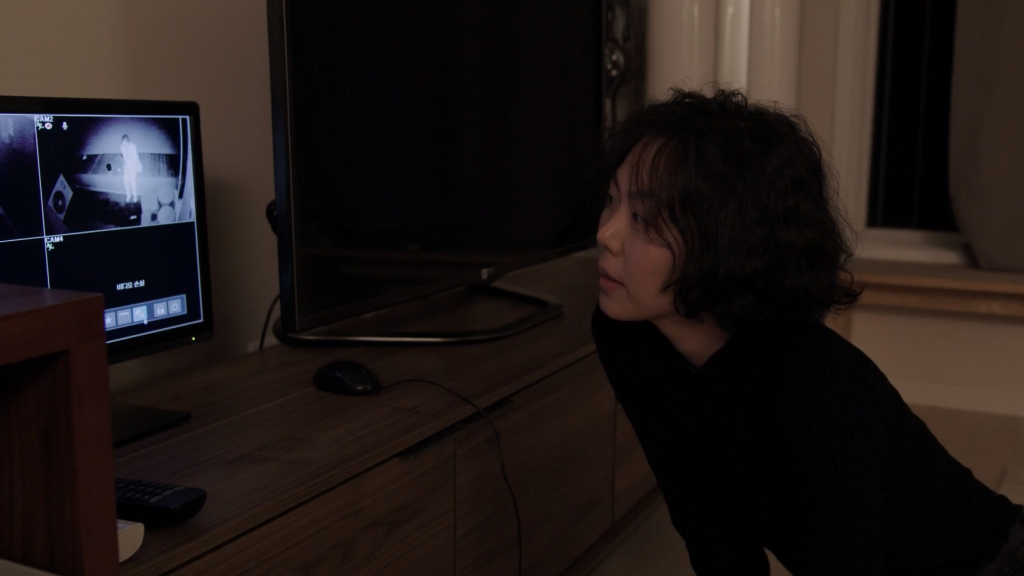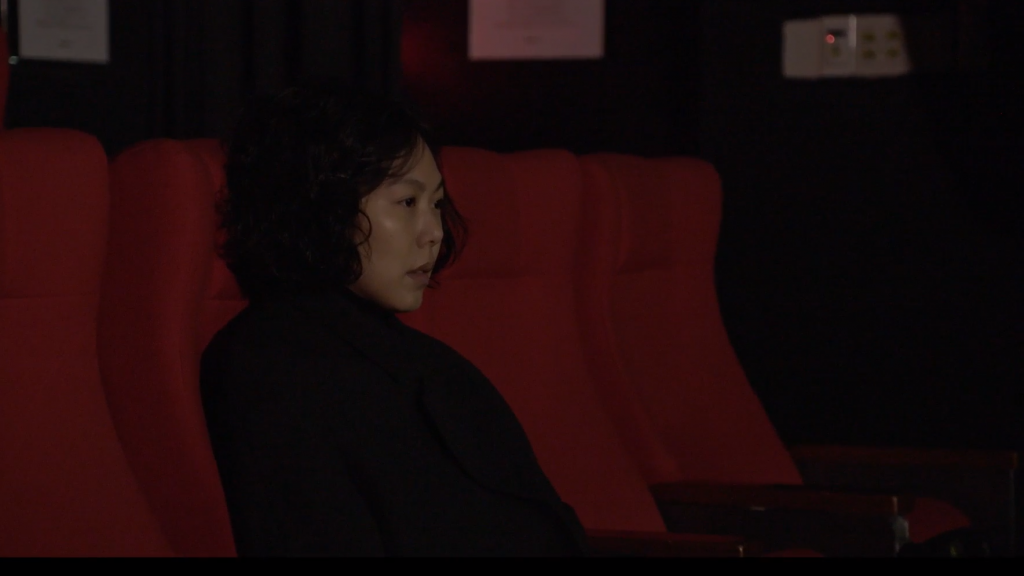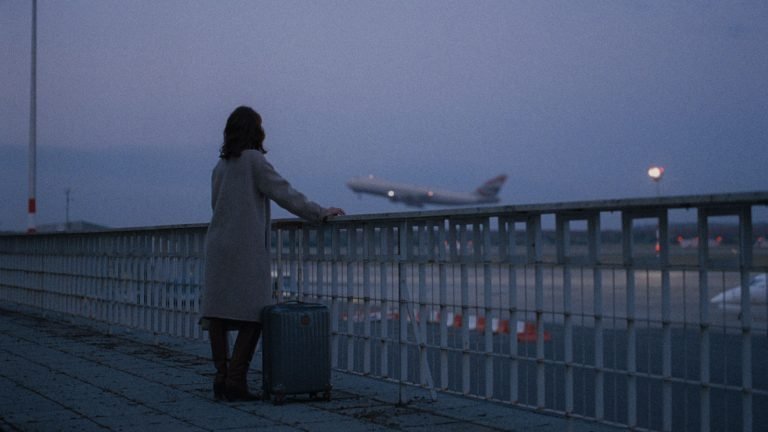'The Woman Who Ran' Review: Light and Clever Reflections on Intimacy
- Published on October 6, 2020
- by Igor Fishman
Seeing a new Hong Sang-soo film is always a pleasure, his oft quiet yet formally challenging dramas have now notched him 15 NYFF appearances, and after a brief absence last year he returns once again. The Woman Who Ran, is a lighter but by no means lesser film focused more on exploring friendships and intimacy than romantic relationships themselves. We follow Gam-hee (Kim Min-hee) as she takes time to visit friends in and around Seoul while her husband is away on business. On more than one occasion she explains that she and her husband have never been apart over the last five years and so she’s taking a solitary trip of her own. All while the film’s title serves as an uneasy reminder that there may be more to the state of her relationship than she lets on. If Gam-hee is the woman who ran, then what is she running from and where is she running to? Without offering concrete answers, the film tethers this act of ‘running’ to moments of escape and reflection, whether through friends or even film itself.
There are many familiar Hong elements present including frequent collaborator Kim Min-hee, however, The Woman Who Ran is more intently focused on the friendship between women than previous Hong films. Its tight structure of exactly three locations, and principally three conversations with three women, makes this thematic goal more concrete. While men aren’t absent from the film, and show up in each of the three sections, they are narratively sidelined as distractions, and filmed largely from the back; even Hong regular Kwon Hae-Hyo who starred in The Day After is spared a close-up shot. With the men out of the way, Hong is free to focus on the different types of relationships, friendships, and degrees of intimacy that exist between the women.


In the first section, the dialogues are indirect and stilted by small talk. We focus on food and animals, with a digression on a belligerent rooster as a way to hint at gender dynamics. Even when a more direct situation comes up, Gam-hee is placed at a distance, as she watches her friend console a neighbor through the security feed. In the second section, relationships become more explicit, her next friend talks about dating and probes deeper into Gam-hee’s relationship with her husband. ‘Do you love him?’ her friend asks, ‘I feel loved every day.’ Gam-hee responds, a red flag if there ever was one, but even at this level closeness, her friend doesn’t probe further. In the third section, Gam-hee runs into a woman from her past who she hasn’t seen in years, and after an awkward exchange, the conversation becomes intense and personal; a beautiful evocation of the way that near-strangers can sometimes understand us with better than lifelong friends. The films hitherto cinematic restraint is rewarded here where a clean simple zoom onto two hands touching; physical intimacy, however minor, takes on paramount dimensions.
Hong films all this in his familiar realist style, keeping the digital camera static for long takes while using pans and zooms in place of cuts to shift the frame. Often this modest approach facilitates quick and cheap shoots and allows the actors and dialogue to sit center stage. This time, however, there is an added layer where the style parallels cleverly with scenes of Gam-hee watching security monitor footage. If in his recent film Grass, Hong suggested his films are like overheard conversations, then here he directly suggests his films are like the footage of stationary cameras: nearly indifferent to the fragments they capture. Within this framework, we become voyeurs, lower stakes than Hitchcock, but attempting to piece these worlds together nonetheless.


This ultimately pays off in the film’s final gesture, which also forms a neat parallel to Hong’s On The Beach At Night Alone. Once again Hong places a protagonist played by Kim Min-hee in a movie theater reflecting on her emotions. If film is the ultimate act of voyeurism then watching someone in a theater is like spying on yourself, or playing with a mirror, and seeing a row of selves stretch out to infinity. The film Gam-hee watches is merely waves crashing on a shore and music, and we can’t help but project her thoughts as we imagine them bouncing from one friend to the next, to the past, to her husband, to the film, and back. She reaches into her bag and pulls out a piece of bread to snack on, and maybe what we witness here, this quiet communion with the screen, is the most intimate moment of all.
Check out the rest of my NYFF coverage in full reviews for the festival’s heavy hitters: Tsai Ming-liang’s Days, Frederick Wiseman’s City Hall, Hong Sang-soo’s The Woman Who Ran, Christian Petzold’s Undine, Steve McQueen’s Lovers Rock and the festival centerpiece: Chloe Zhao’s Nomadland.
Click here to read my NYFF58 Week One coverage.
Thoughts? Feedback? Contact me at hello(at)lostasterisk.com.



‘Lapsis’ Review: Skewering the Gig Economy
Noah Hutton’s sci-fi satire Lapsis may stumble at times, but its punchy riffs on the gig economy make it worth a look.

‘Just Don’t Think I’ll Scream’ Review
(link to theQuietus.com)
A staggering work that uses clips from over 400 films to tell a personal story about cinephilia, alienation, and loss, while speaking directly to our anxious moment. Read my review in The Quietus.

‘Preparations to be Together for an Unknown Period of Time’ Review
(link to UltraDogme.com)
A Sylvia Plath poem comes to life in this meditation on loneliness, infatuation, and love as it exists in our inner worlds. Read my review at Ultra Dogme.

‘Some Kind of Heaven’ Review
(link to InReviewOnline.com)
Equal parts Errol Morris and David Lynch, this oddball journey through the world’s largest retirement community reveals a startling portrait of American alienation. Read my review at In Review Online.

The Ten Best Films of 2020
With 2020 finally drawing to a close, lets take one last look at the wonderful films that came out in this otherwise devastating year.

‘Black Bear’ Review: Aubrey Plaza’s Time to Shine
Aubrey Plaza shows off her considerable talents and range, overcoming a messy script to once again prove her mettle as a formidable dramatic lead.
